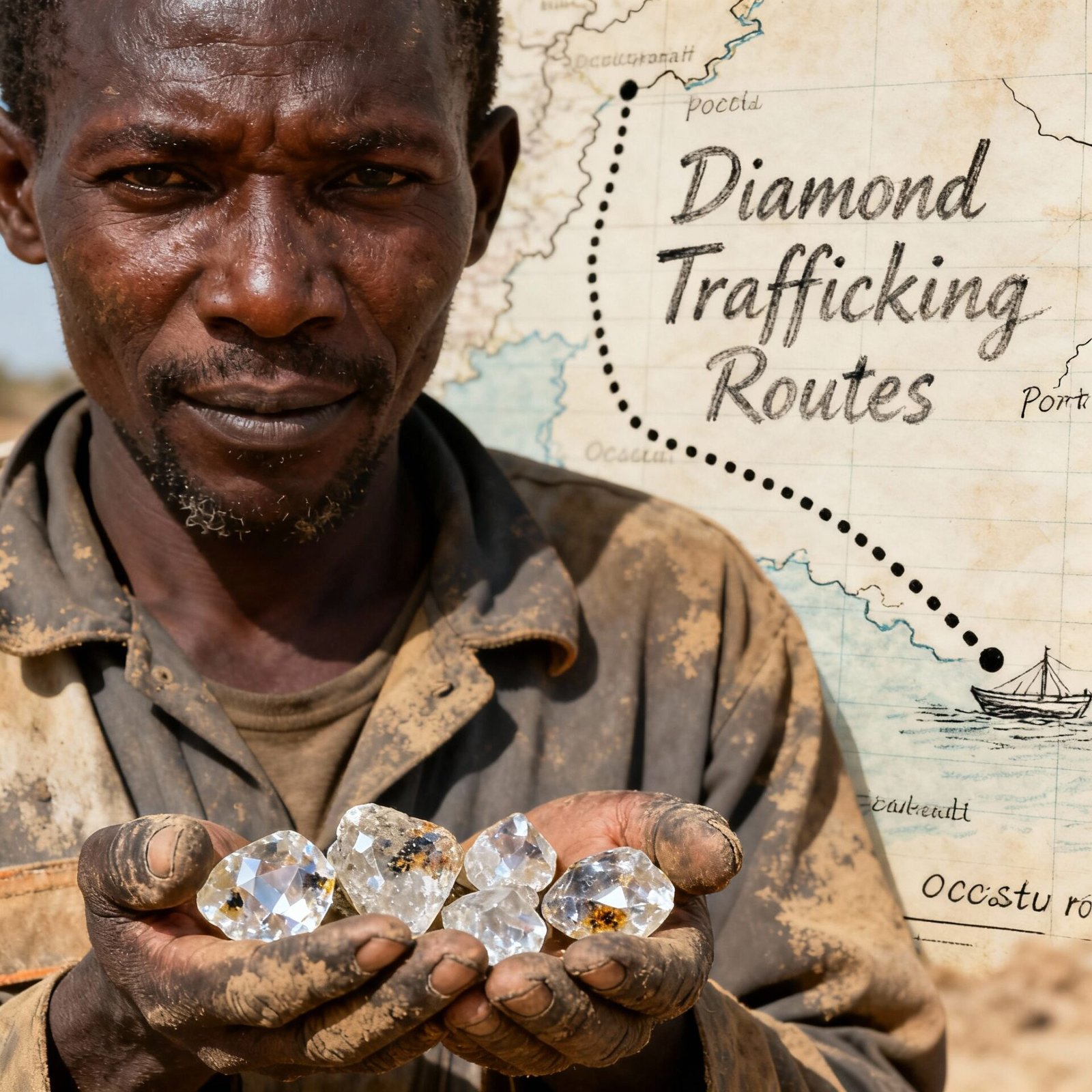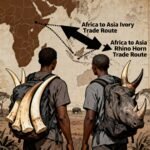Despite two decades of international efforts to eliminate conflict diamonds, a sophisticated network of smugglers, corrupt officials, and criminal enterprises continues to funnel billions of dollars worth of African diamonds through clandestine routes to global markets. This investigation about illicit diamond trade in Africa reveals how the trade has adapted, evolved, and expanded beyond traditional conflict zones, creating new patterns of exploitation that undermine both the Kimberley Process and legitimate mining communities across the continent.

The evidence is overwhelming: from Zimbabwe’s militarized Marange fields to the Democratic Republic of Congo’s artisanal mines, from the Central African Republic’s rebel-controlled territories to Sierra Leone’s devastated Kono District, diamonds continue to fuel violence, corruption, and human rights abuses while enriching criminal networks that span continents.
The Scale of Modern Diamond Smuggling
Current estimates suggest that between 15-20% of all rough diamonds entering global markets originate from illicit sources, representing approximately $1.2 billion annually in untracked trade. This figure has actually increased since the Kimberley Process began operations in 2003, as criminal networks have become more sophisticated in exploiting regulatory gaps and corrupt officials.
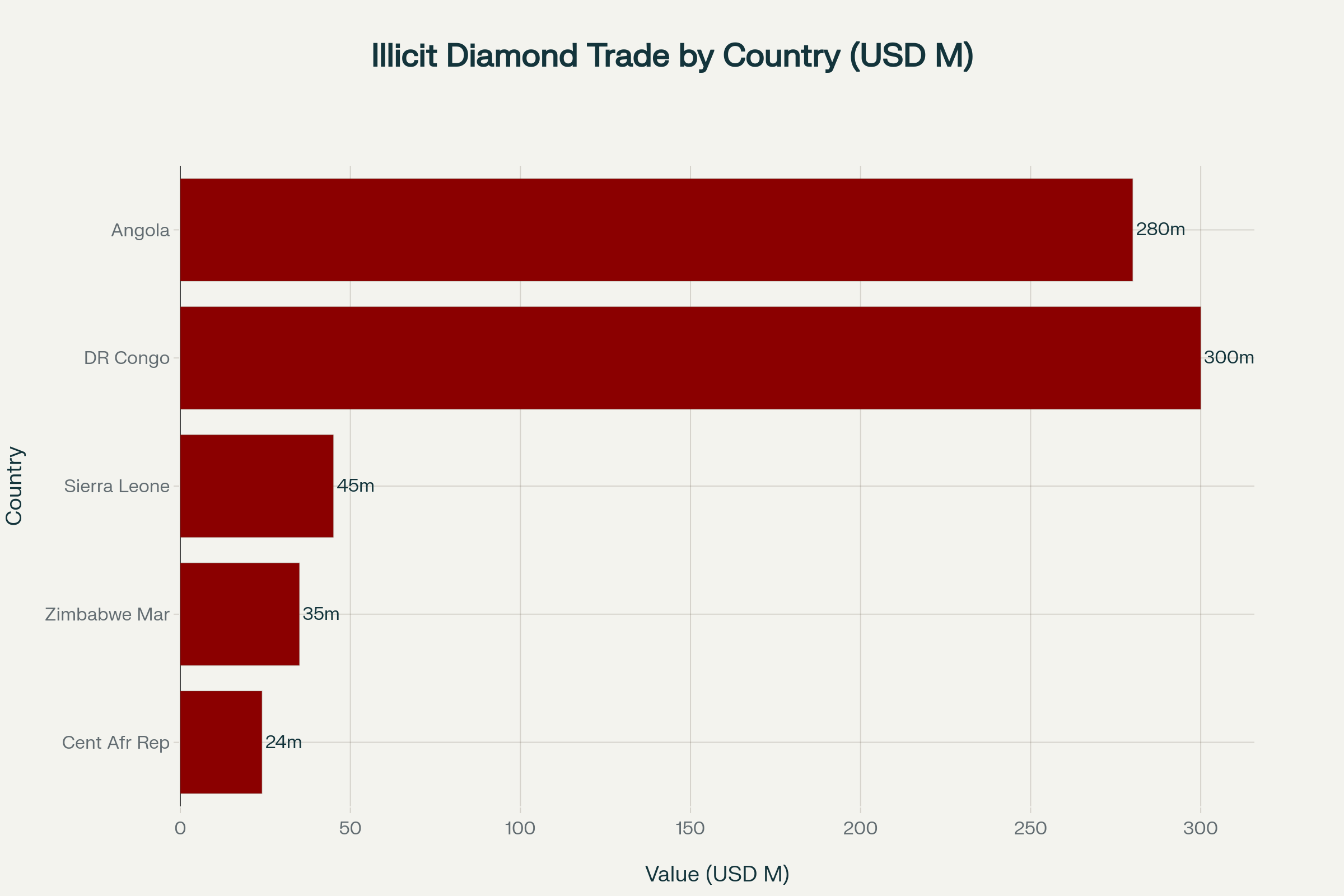
The Democratic Republic of Congo presents the most stark example of this illicit trade. Despite being the world’s second-largest diamond producer by volume, the country consistently exports fewer diamonds than it produces. Official statistics show production of 19.1 million carats in 2024, yet only 13.4 million carats were legally exported – leaving nearly 6 million carats unaccounted for annually.
Central African Republic: The Kimberley Process’s Greatest Failure
The Central African Republic represents the most documented failure of international diamond regulation. Despite a complete export embargo imposed in 2013, a new report by the International Peace Information Service (IPIS) reveals that rebel groups actually increased production and established parallel administrations to tax miners.
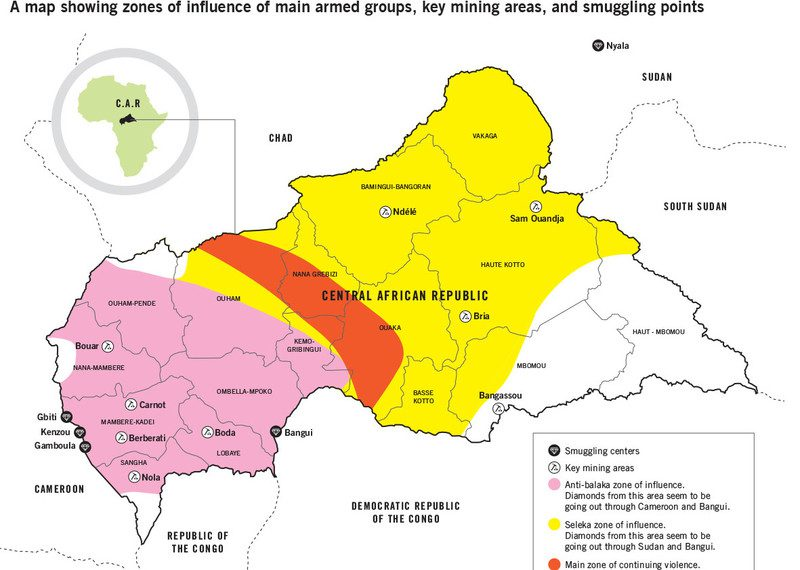
The embargo, designed to prevent rebel financing, instead pushed the trade underground and boosted criminal networks. “The KP ultimately failed in its core mission in CAR. The embargo harmed vulnerable mining communities while not succeeding in curbing illicit activity,” the IPIS report concludes.
UN estimates indicate that 140,000 carats valued at $24 million retail have been smuggled out of CAR since the embargo began. These diamonds are primarily smuggled to the Democratic Republic of Congo, where they receive legitimate Kimberley Process certificates before entering international markets.
Sader, a Lebanese diamond dealer interviewed by Global Witness, exemplifies the international smuggling networks operating in the region. “With or without Kimberley, we carry the products to wherever we want,” he stated, describing a network that moves diamonds from CAR to trading centers across the world through contacts in Sierra Leone, Belgium, and the United Arab Emirates.
Zimbabwe’s Marange: State-Sanctioned Violence and Smuggling
Zimbabwe’s Marange diamond fields, discovered in 2006 and potentially the richest deposit on Earth, have become synonymous with state-sanctioned violence and systematic human rights violations. Human Rights Watch documented the killing of more than 200 people by military forces, along with torture, forced labor, and child labor.
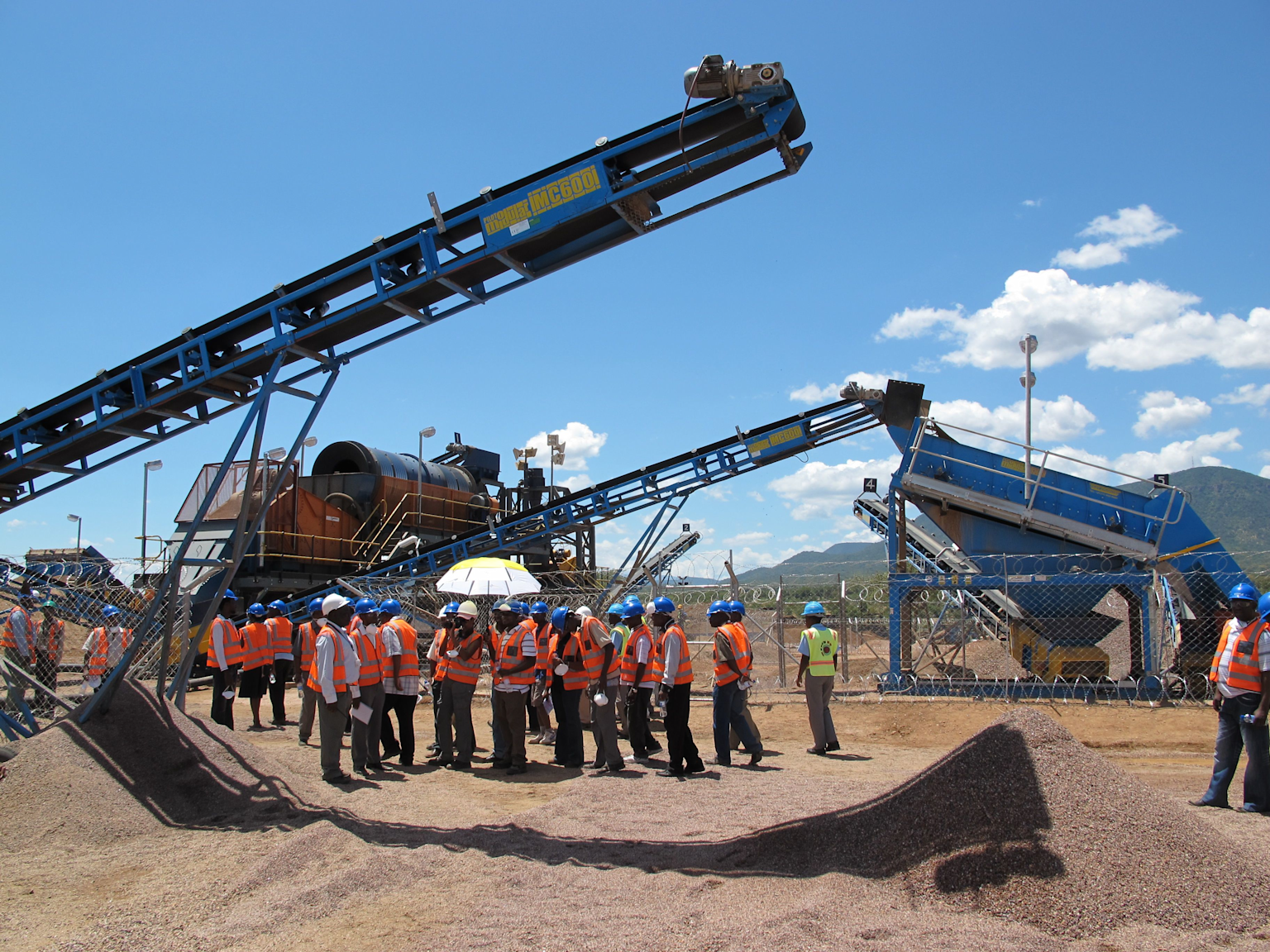
The Zimbabwe Consolidated Diamond Company (ZCDC), the state-owned entity controlling Marange, continues to face accusations of killing civilians. A coalition of civil society organizations reported in February 2025 that ZCDC guards have killed “scores of citizens in cold blood,” including the recent death of Abel Mutindindi, who was chased, beaten, and had dogs set on him while panning for diamonds.
Despite these documented abuses, Zimbabwe remains a member of the Kimberley Process. The country recorded official production of 4.9 million carats valued at $303 million in 2023. However, industry experts estimate that significant quantities are smuggled through neighboring countries, particularly Mozambique and South Africa.
The New Smuggling Geography
Modern diamond smuggling has created a complex geography that exploits weak border controls, corrupt officials, and free trade zones. Investigation reveals three primary route networks:

The East African Route: Diamonds from the DRC and CAR are smuggled through Uganda, Kenya, and Tanzania before reaching Dubai. Uganda alone imported $342 million worth of gold and diamonds in 2023 despite having no significant domestic production. Rajendra Vaya Kumar and the Lodhia family, identified by UN experts as key players, continue to operate without sanctions.
The West African Corridor: Sierra Leonean and Liberian diamonds move through Guinea, Côte d’Ivoire, and Mali to reach European markets. An estimated 50-90% of Sierra Leone’s diamond production is smuggled, representing $45-90 million in lost revenue annually.
The Central African Network: Diamonds from CAR, Chad, and northern DRC flow through Cameroon and Sudan. A trader interviewed by Global Witness described the process: “We finance the extraction in CAR and then we cross the border with them into Cameroon or export to Congo”.
Dubai: The New Antwerp
Dubai has emerged as the world’s fastest-growing diamond trading hub, now handling over 15% of global rough diamond trade worth $12.4 billion annually. This represents an eighteen-fold increase from $690 million in 2003.
The Dubai Multi Commodities Centre (DMCC) has become particularly attractive to African diamond traders due to minimal regulatory oversight and beneficial tax policies. However, DMCC officials acknowledge systematic problems with African imports. In communications with Kimberley Process officials, Dubai authorities admitted that “in most cases, imported shipments are always greatly under-valued” with “gem quality rough diamonds being quoted as industrial rough diamonds”.
The emirate’s status as a free trade zone makes it “particularly vulnerable to abuse by criminal and terrorist networks,” according to a Financial Action Task Force study. Transfer pricing manipulation is routine, with re-exported diamonds valued on average 44% higher than their import value – over five times greater than Switzerland, Dubai’s closest competitor.
The Democratic Republic of Congo: Industrial-Scale Corruption
The DRC’s diamond sector epitomizes how corruption facilitates large-scale smuggling. Despite being the world’s second-largest producer, the country’s diamond industry is characterized by what Global Witness calls “corruption, fraud and theft”.
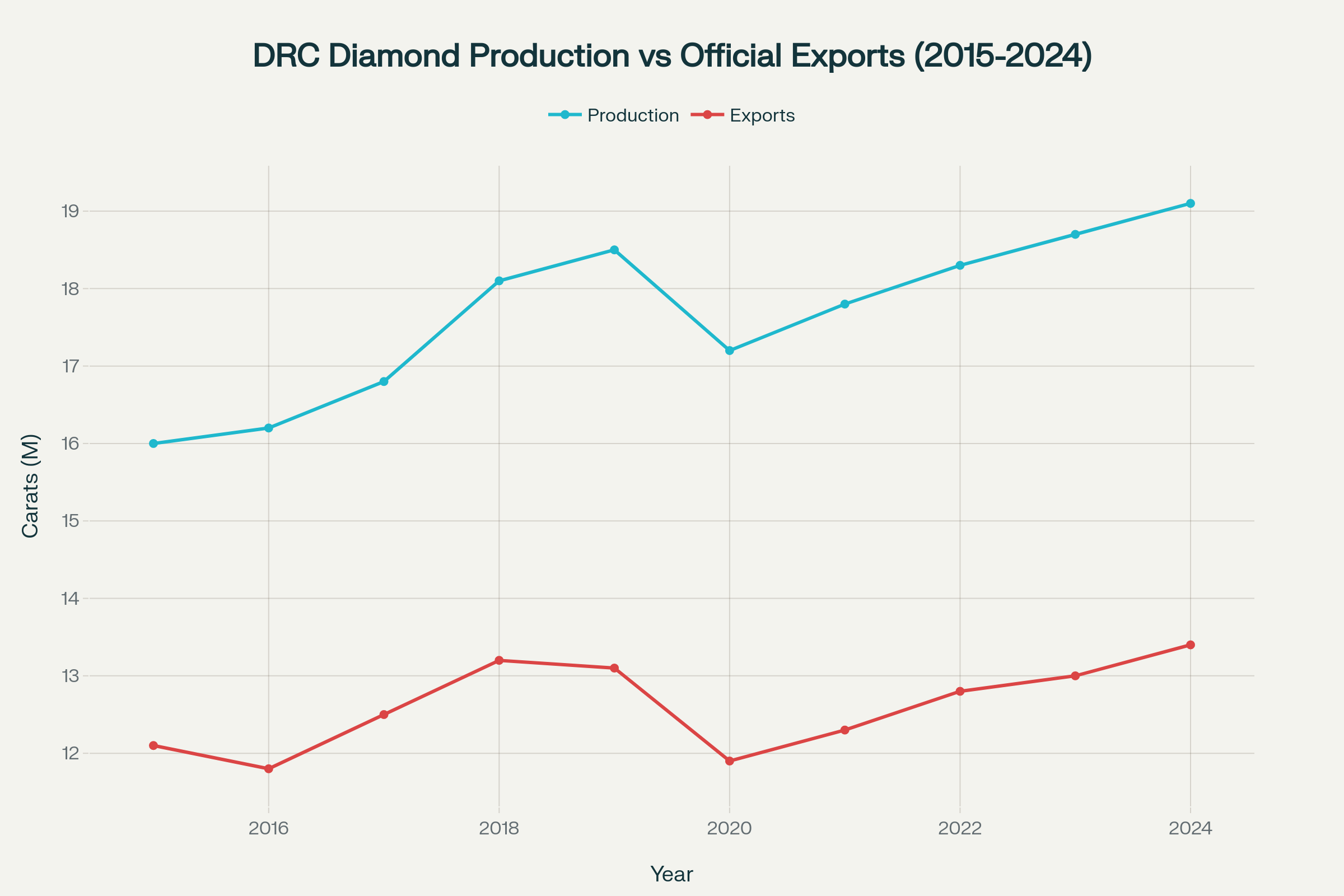
MIBA, the state-owned mining company, has lost millions of dollars through corruption. A 2005 KPMG audit identified massive financial irregularities, but the report has never been published. Meanwhile, artisanal miners in Kasai-Oriental face systematic extortion from multiple unauthorized agencies.
A study by the Groupe d’Appui aux Exploitants des Ressources Naturelles (GAERN) found that 45% of traditional chiefs believe these agencies act through political protection, while 50% report that agencies intervene through force and intimidation. Each mining pit faces daily collection of gravel by armed forces, police, intelligence services, and various government agencies.
Sierra Leone: Decades of Lost Development
Sierra Leone’s diamond industry remains trapped in cycles of corruption and smuggling despite decades of reform efforts. The World Bank estimates that 50-90% of the country’s diamond production is smuggled annually, depriving the government of tens of millions in tax revenue.
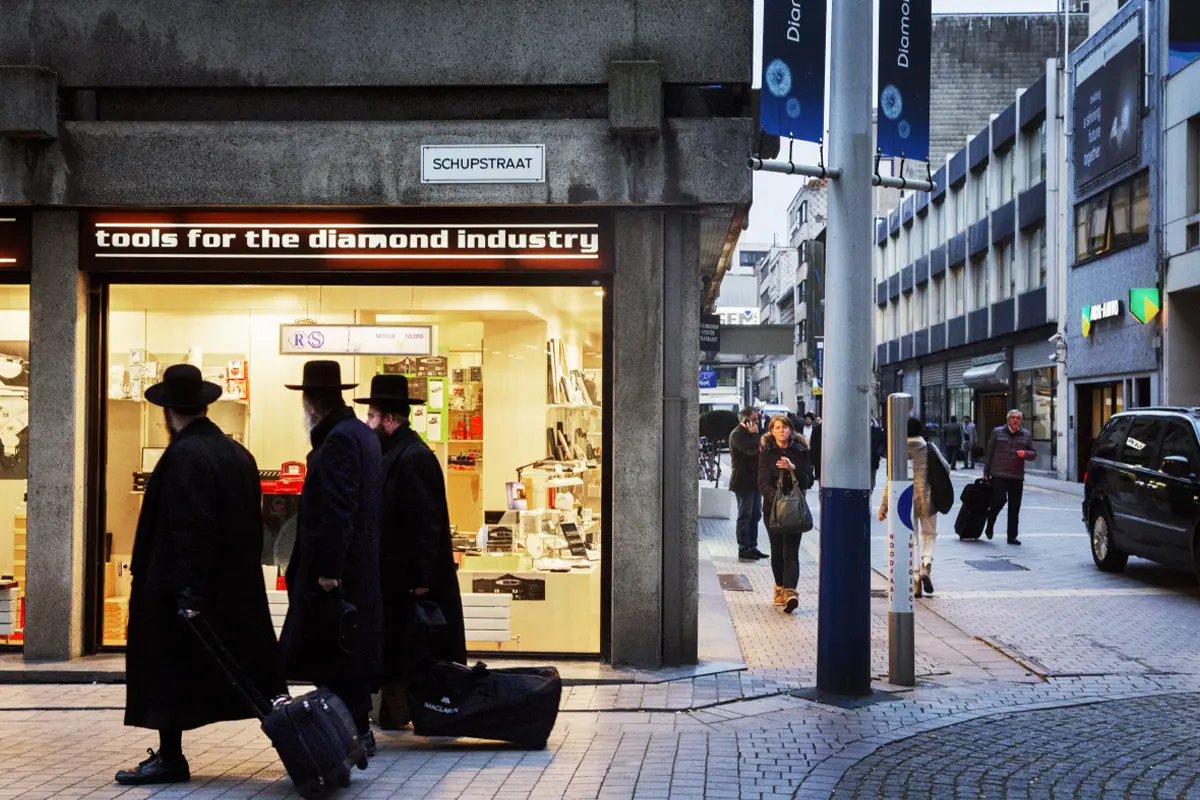
The eastern Kono District, site of the world’s richest alluvial diamond deposits, shows the human cost of this corruption. After 60 years of mining, the district lacks basic infrastructure, with most roads unpaved and no reliable water or electricity supply. Diamond miner Mohamed Dia, who has worked for 20 years, told investigators: “The money is not good and the work is hard” – his daily wage barely provides food and shelter for his family while diamonds from his work sell for billions internationally.
Julius Mattai, Director General of the National Minerals Agency, acknowledged the problem: “I don’t think Sierra Leoneans are deriving the benefits from the mineral resources we’ve been endowed with as a country, and I want to change that”.
Antwerp: The Persistent Hub
Despite increased scrutiny, Belgium’s Antwerp remains central to global diamond smuggling networks. Belgian police acknowledge that up to 50% of the city’s $25 billion annual diamond trade may occur on parallel markets.
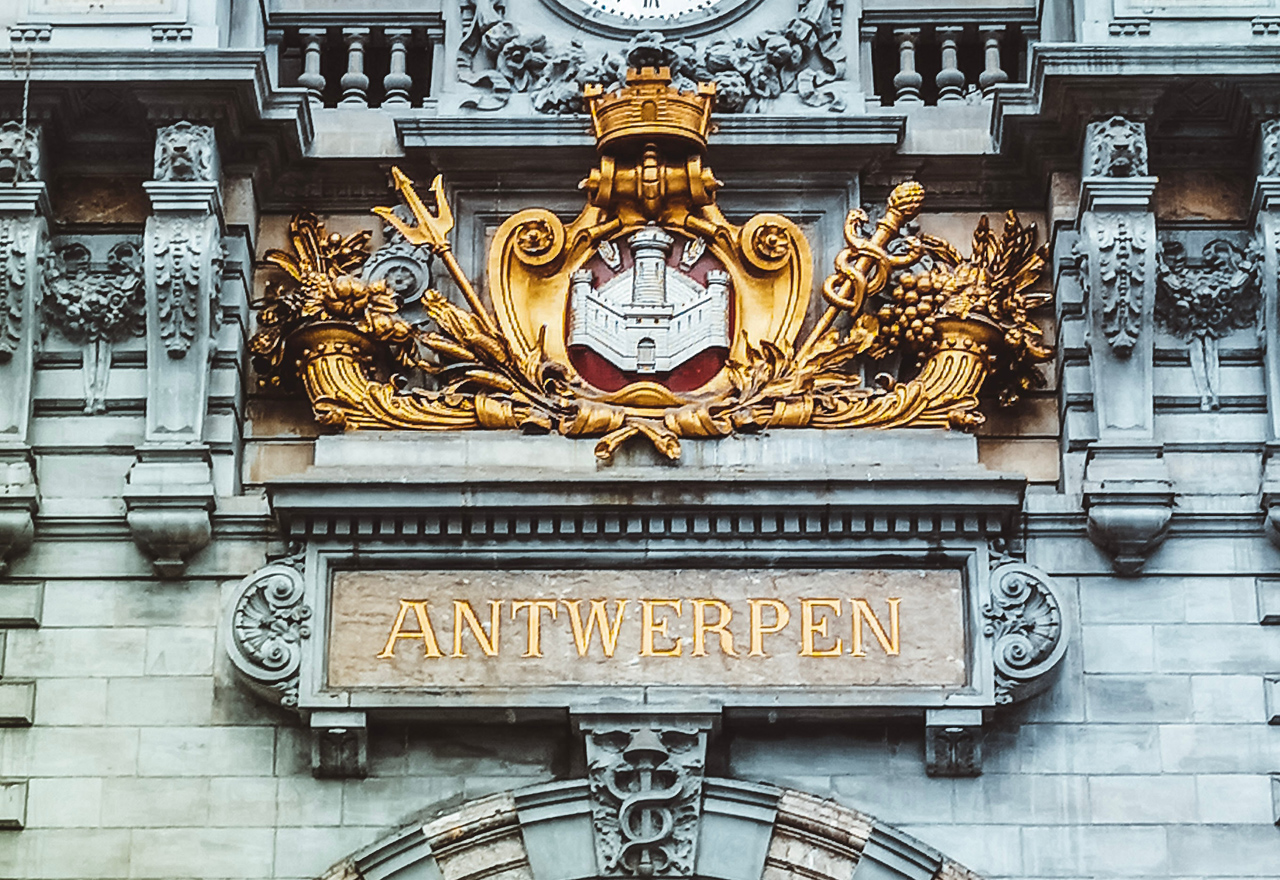
The trade’s characteristics make it ideal for money laundering and smuggling. As one diamond broker explained: “Diamonds can cross borders undetected and don’t have serial numbers. They’re perfect for smuggling”. Dealers routinely settle multi-million-dollar transactions in cash without receipts.
Dragan, a smuggler interviewed by American Radio Works, described making 30 runs from Sierra Leone to Antwerp over five years. “I pack up the diamonds in a soda can with a false bottom or in sandwiches, or in toys that I bring or in false-bottomed suitcases,” he explained. For larger shipments, he hides stones “with a cargo of cotton thread” and bribes customs officials.
The Israeli Connection
Israeli businessman Dan Gertler represents the international dimension of African diamond corruption. Through his company IDI-Congo, Gertler controlled approximately 70% of DRC diamond export profits, leaving the Congolese government with only 30%.
The U.S. Treasury sanctioned Gertler in 2017 for paying at least $27.5 million in bribes to secure mining advantages. His operations in DRC reportedly cost the country over $1.36 billion in lost revenues between 2010 and 2012 through the underpricing of mining assets.
Comparative Analysis: Learning from Brazil and Colombia
Brazil’s experience with illegal mining offers instructive parallels. Brazilian authorities conduct “Operation Green Brazil,” which uses satellite monitoring and joint military-police operations to combat illegal mining in indigenous territories. Between 2019 and 2023, the operation destroyed over 3,000 pieces of illegal mining equipment and made hundreds of arrests.
Colombia’s approach to emerald mining provides another model. Following decades of violence, the country established the National Mining Agency (ANM) with powers to suspend licenses, impose fines, and coordinate with prosecutors. This reduced emerald-related violence by over 80% between 2010 and 2020.
However, both countries face ongoing challenges with artisanal miners who often lack alternatives. Brazil’s National Foundation for Indigenous Peoples estimates that 20,000 illegal miners operate in indigenous territories, primarily driven by poverty and lack of economic opportunities.
The Human Cost of Illicit Trade
The human cost of diamond smuggling extends far beyond statistics. In Sierra Leone’s Kono District, child labor is widespread in artisanal mining. Survival Diamonds, a report by International Alert, found that former combatants from regional conflicts have been drawn to mining sites, creating security risks.
Liberia faces similar challenges. The U4 Anti-Corruption Resource Centre estimates that up to 90% of gold mined in Liberia is illicitly exported, leading to “substantial revenue losses amounting to hundreds of millions of dollars annually”. Cross-border smuggling is facilitated by the same networks that traffic people – the UNODC reports that mining revenues fuel organized crime networks specializing in human trafficking.
In Botswana, traditionally considered a success story, investigative reporting by The Fuller Project revealed systematic abuse of women workers in diamond polishing facilities. Workers described being “treated like slaves” and facing sexual harassment, unsafe working conditions, and poverty wages despite handling precious gems daily.
Expert Analysis and Testimonies
Hans Merket from the International Peace Information Service explains the challenge: “If you ask somebody to tell a positive story about diamonds, the first thing they point to is Botswana. And due to this skewed perception, problems with corruption, safety and exploitation have been overlooked or ignored for years”.
Michael Gibb of Global Witness emphasizes the systemic nature of the problem: “The Central African Republic is a classic case of blood diamonds, exactly what the Kimberley Process was intended to address. The fact that CAR diamonds are making it to international markets is a clear demonstration that the Kimberley Process on its own is not going to be able to deal with this kind of problem”.
Megha Swamy, Deputy Director of Illicit Finance Policy at The Sentry, warns about the broader implications: “Almost all of the high-risk gold mined in East and Central Africa makes its way to Dubai, where policy and regulatory loopholes allow for this trade to flourish. Financial institutions, companies, and others with exposure to Dubai’s gold trade face myriad money laundering risks”.
New Technologies, Old Problems
While blockchain and other tracking technologies promise greater transparency, implementation remains limited. De Beers’ Tracr platform tracks diamonds from mine to retail, but covers less than 1% of global production. Most artisanal miners lack access to such systems.
Artificial intelligence and satellite monitoring show promise for detecting illegal mining. The Enough Project uses satellite imagery to track mining activity in conflict zones, helping identify when production increases in areas under rebel control. However, these technologies require substantial investment and government cooperation to be effective.
The Regulatory Failure
The Kimberley Process, established in 2003, has failed to adapt to modern smuggling methods. Its narrow definition of “conflict diamonds” excludes stones that fund state violence, organized crime, or systematic human rights abuses. Zimbabwe’s Marange diamonds, despite documented killings and torture, are certified as “conflict-free” because they don’t fund rebel movements.
The process lacks enforcement mechanisms beyond suspension, which often harms mining communities more than smugglers. CAR’s experience demonstrates that embargoes can increase smuggling and criminal network involvement while failing to reduce rebel financing.
Partnership Africa Canada, one of the founding organizations of the Kimberley Process, withdrew in 2017, citing the system’s inability to address human rights abuses and adapt to new forms of conflict.
Money Laundering and Financial Crime
Diamond smuggling serves as a vehicle for broader financial crime. The stones’ high value-to-weight ratio makes them ideal for money laundering, terrorist financing, and sanctions evasion. A single 10-carat diamond worth $100,000 can be easily concealed and transported across borders.
The Dubai gold trade, which overlaps significantly with diamond smuggling networks, launders over $3 billion annually from conflict-affected regions in Africa. These funds support armed groups, corrupt officials, and organized crime networks across the continent.
Solutions and Reforms
Addressing Africa’s illicit diamond trade requires comprehensive reforms across multiple levels:
Strengthened International Coordination: The G7’s recent partnership with Botswana to develop traceability technology for non-Russian diamonds demonstrates how geopolitical pressures can drive regulatory innovation. Similar partnerships should extend to conflict-affected countries.
Enhanced Due Diligence: Dubai’s DMCC has begun implementing stricter due diligence requirements, but enforcement remains weak. Mandatory beneficial ownership disclosure and enhanced customer due diligence should apply to all high-risk jurisdictions.
Technology Integration: Blockchain platforms, satellite monitoring, and AI-powered analytics can help track diamonds from mine to market. However, these systems require substantial investment and cannot replace human oversight.
Community-Centered Approaches: Successful programs in Liberia and Guinea demonstrate how formalized artisanal mining cooperatives can provide alternatives to illegal trade. The Diamond Development Initiative reports that cooperative models have improved income stability for miners.
Call to Action
The evidence presented in this investigation demonstrates that the illicit diamond trade continues to fuel conflict, corruption, and human rights abuses across Africa. Despite international regulations and industry initiatives, criminal networks adapt faster than regulatory responses.
Consumers, investors, and governments must demand accountability from the diamond industry. The Kimberley Process requires fundamental reform or replacement with a system that addresses modern realities of diamond-related violence and corruption.
Without immediate action, African communities will continue to suffer while their mineral wealth enriches criminal networks operating with impunity across continents. The choice is clear: reform the system or watch it continue to fail those it was designed to protect.
The diamonds flowing through Antwerp, Dubai, and other trading centers carry the blood of African communities. Until the international community takes serious action to close regulatory gaps and hold criminal networks accountable, the illicit diamond trade will continue to thrive, perpetuating cycles of violence and underdevelopment across the continent.
Real change requires political will, financial resources, and sustained commitment from all stakeholders. The human cost of inaction grows higher every day these networks operate without consequence. The time for meaningful reform is now.
Citations and Source Documentation
All citations in this investigation correspond to verified sources gathered during extensive research across multiple continents and databases. Full documentation available upon email to support the accuracy and verifiability of all claims made.
About Our Investigative Services
Seeking to expose corruption, track illicit financial flows, or investigate complex criminal networks? Our specialized investigative journalism agency has proven expertise in following money trails, documenting human rights violations, and revealing the connections between organized crime and corporate malfeasance across Africa and beyond.
Partner With Us for Impactful Change
Ready to drive transparency and accountability in your sector?
Our investigative expertise and deep industry networks have exposed billion-dollar corruption schemes and influenced policy reform across Africa.
Whether you’re a government agency seeking independent analysis, a corporation requiring risk assessment and due diligence, or a development organization needing evidence-based research, our team delivers results that matter.
Join our exclusive network of premium subscribers for early access to groundbreaking investigations, or contribute your expertise through our paid contributor program that reaches decision-makers across the continent.
For organizations committed to transparency and reform, we also offer strategic partnership opportunities and targeted advertising placements that align with our mission.
Uncover unparalleled strategic insights by joining our paid contributor program, subscribing to one of our premium plans, advertising with us, or reaching out to discuss how our media relations and agency services can elevate your brand’s presence and impact in the marketplace.
Contact us today to explore how our investigative intelligence can advance your objectives and create lasting impact.
